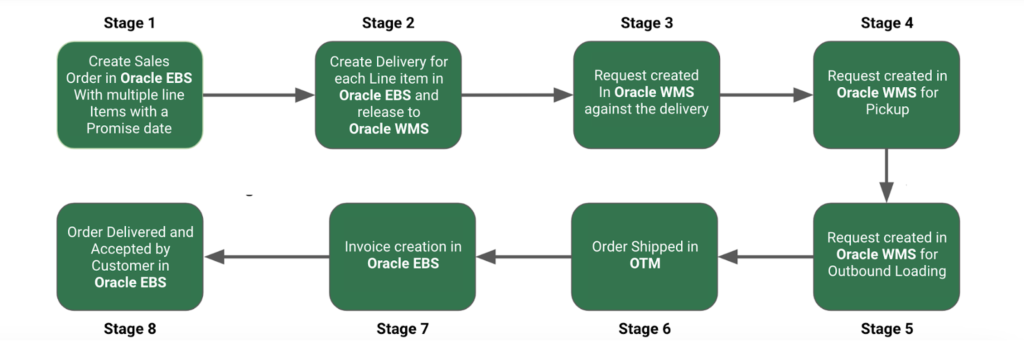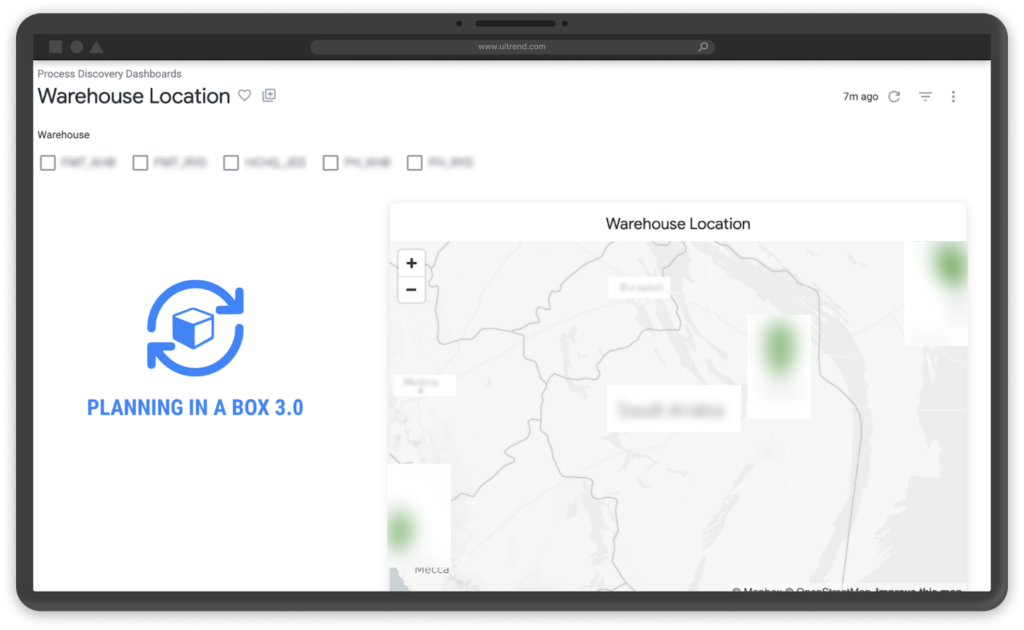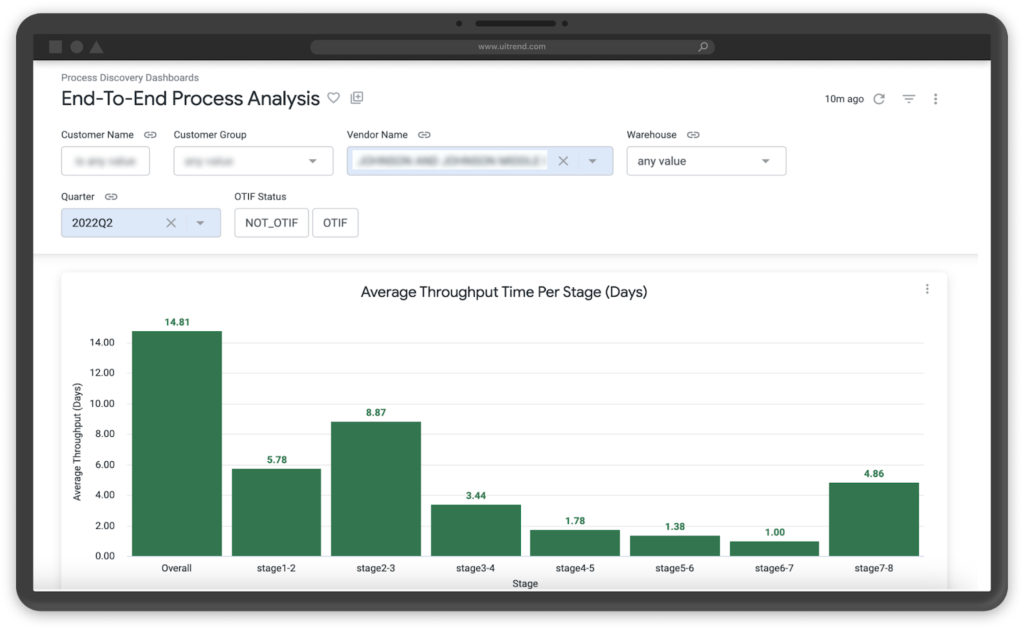
Transform Your Supply Chain Planning and Marketing Strategies with Google Cloud and SAP Integration

Transform Your Supply Chain Planning and Marketing Strategies with Google Cloud and SAP Integration
January 17, 2024 | Asheesh Gupta
Blog / Optimize Your Supply Chain: Eliminate Process Inefficiencies Leveraging Your Own Oracle Apps Data
In the world of enterprise resource planning (ERP), Oracle stands as a powerhouse, offering a range of solutions across various sectors. However, the challenge of integrating Oracle data, especially for supply chain use cases, is extremely complex. Unlike SAP data, which benefits from the Cortex framework’s support, Oracle data integration lacks a standardized reference architecture or readily available packaged solution. This gap in the landscape means higher costs, increased risk, and a significant barrier to leveraging advanced AI and analytics capabilities.
Despite these obstacles, the demand for AI-driven insights from Oracle data is growing. Companies are increasingly asking, “How can we baseline our supply chain and improve through insight derived from our Oracle-based ERPs?”
Oracle environments often lack external datasets and AI integration, leading to a deficiency in critical insights. Questions that businesses are eager to answer include:
→ How can we improve our On-Time In-Full (OTIF) delivery rates?
→ What are the bottlenecks in our supply chain processes?
→ Can we predict and mitigate supply chain disruptions?
→ How do we optimize inventory levels across multiple warehouses?
→ What strategies can we employ to enhance vendor performance?
Answering these questions requires process mining – a method that entails connecting various business systems, such as EBS, Warehouse Management System (WMS), and Oracle Transport Management (OTM) system, and analyzing this integrated data to extract meaningful insights.
Planning in a Box is a decision intelligence platform uniquely engineered to navigate the complexities of Oracle data systems. At its core, the platform is designed to simplify the intricate web of data extraction, transformation, and analysis. It goes beyond integration, focusing on extracting nuanced insights critical for real-time decision-making in supply chain management.
By connecting data points from various Oracle sources, Planning in a Box ensures a coherent, unified data flow. The platform’s advanced analytics are designed to delve into this integrated data, identifying trends, anticipating bottlenecks, and proposing actionable strategies to boost overall supply chain performance.
A global conglomerate with a multifaceted supply chain sought to upgrade its operational tracking from manual processes to automated dashboards. This initiative was driven by the need for real-time monitoring of warehouse activities, covering inbound and outbound logistics, as well as transportation. The company faced the challenge of integrating several Oracle systems to achieve this goal:
The key objectives were establishing live connectivity between Oracle WMS and EBS and ensuring seamless integration of essential data for accurate On-Time In-Full (OTIF) metrics, crucial for enhancing supply chain efficiency.
Pluto7’s approach began with constructing a robust data foundation, critical for the global conglomerate’s supply chain transformation. The focus was on creating a unified and reliable data infrastructure. This involved:
Through this foundation, Pluto7 set the stage for a seamless flow of information, which was essential for the next step: process mining.
With a solid data foundation in place, Pluto7 employed process mining techniques to uncover deeper insights into the conglomerate’s supply chain operations. This phase involved:
In response to the conglomerate’s specific needs, Pluto7 developed a series of customized dashboards designed to turn Oracle data into actionable insights. These dashboards were tailored to address key operational areas, offering enhanced visibility and deeper analytical capabilities.

Purpose: Provides an at-a-glance view of On-Time In-Full (OTIF) delivery metrics.
Impact: Before, the conglomerate lacked a consolidated view of OTIF metrics. Now, they can easily monitor supply chain reliability and quickly pinpoint areas needing improvement without having to sift through disjointed reports.
Teams can now identify trends and anomalies in OTIF performance in real time, facilitating immediate corrective actions. This level of proactive management was not feasible with the previous data setup.

Purpose: Provides real-time mapping of warehouse activities for dynamic logistics optimization.
Impact: The dashboard enables logistics teams to optimize routes and inventory distribution based on live data, a significant improvement over the reactive, often outdated strategies used before.

Purpose: Calculates average throughput by integrating data across Oracle EBS, OTM, and Oracle WMS.
Impact: Calculating throughput across different Oracle platforms was a complex, error-prone process. This dashboard simplifies it, offering clear insights into throughput and identifying bottlenecks efficiently.

Purpose: Identifies specific delays at every stage of the supply chain and suggests improvements.
Impact: This dashboard provides a clear view of the entire supply chain process, from sales order creation to last-mile delivery. It covers crucial areas like warehousing (both inbound and outbound), shipping, and invoicing. The dashboard pinpoints where delays happen in these stages and suggests practical, data-based improvements.
The whole journey from building a data foundation to executing process mining and extracting insights was completed in 4 weeks, significantly shorter than the industry standard of several months to a year.
A data transformation project like this usually involves moving tables from one source to another, involving complex joins, and creating unified views. A single error in this process can cause significant delays. However, leveraging our deep Oracle expertise and our decision intelligence platform, which features a robust data model and reliable architecture, enabled us to accelerate this process.
With Oracle’s potential integration into the Cortex framework, we anticipate even more streamlined operations in the future. Our decision intelligence platform is already Cortex-enabled.
If you are facing challenges with your Oracle data and are looking to harness the power of AI and advanced analytics for deeper supply chain insights, reach out to us. Our expertise and innovative tools are designed to transform complex Oracle data into clear, actionable intelligence efficiently and effectively. Let’s explore how we can bring this transformative capability to your supply chain operations.
ABOUT THE AUTHOR